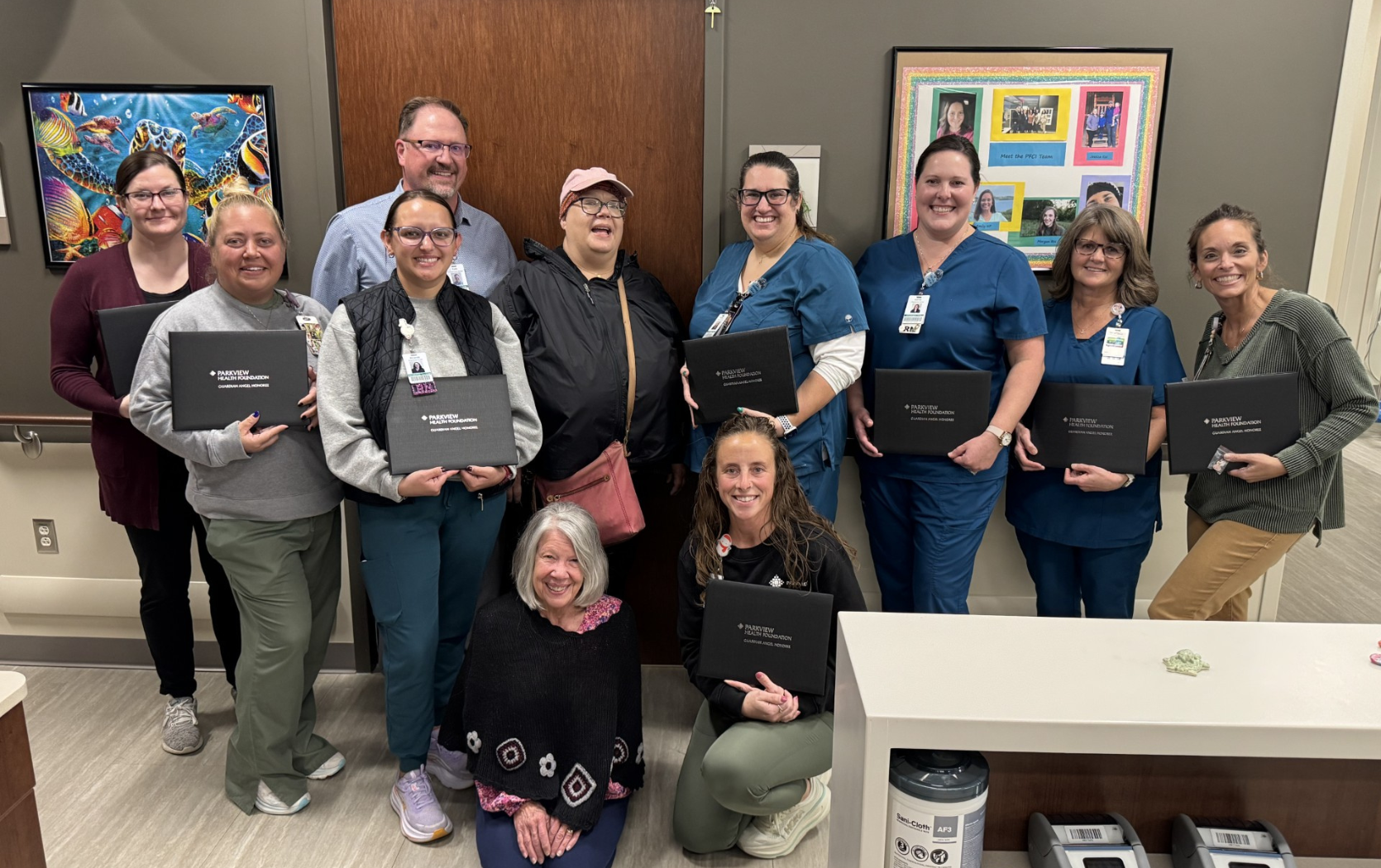
This post was written by Michael J. Davis, DO, MPH, Parkview Infectious Diseases.
In 1981 a cluster of patients were reported to the Centers for Disease Control and Prevention (CDC) as having developed pneumonia from an unusual organism called Pneumocystis jirovecii (PJP). These clusters of unusual pneumonia raised red flags across the infectious disease world. This sort of infection typically only occurred in severely immunocompromised adults and for an unknown reason was afflicting formerly healthy adults. These pneumonia cases and a wave of other opportunistic infections led to the discovery of the human immunodeficiency virus (HIV) as the culprit infection that was attacking people’s immune systems.
A troubled road to treatment
The HIV epidemic created mass hysteria, fear and stigma across the country. Transmission of HIV was discovered to be primarily through sexual activity and exposure to infected blood. Unfortunately, due to the high prevalence of the infection in the men who have sex with men and the IV drug use population, there was serious alienation and stigmatization of a portion of our population that was in desperate need of help. Fear and stigma drove this population into isolation at a time when there were no effective treatments. New medications that were developed were often not well tolerated and the virus would quickly adapt and become resistant. The future for those afflicted was bleak with the remainder of their lives expected to be that of physical wasting, opportunistic infections, cancers and ultimately death.
Today, thanks to medical advances, HIV is merely another chronic disease that can be managed. While there is no cure yet for HIV, medications have continued to advance to the point that those living with HIV ultimately have the same life expectancy as those living without the virus. Modern therapies can keep the virus at an undetectable level in the blood and make it nearly impossible for the virus to be transmitted to others.
Unfortunately, there is still some stigma associated with HIV, which makes ongoing education incredibly important. While the threat of an incurable infection is scary, patients with HIV can live a normal life. The goal of medical providers is to eliminate any remaining stigma and help those with an HIV diagnosis live happy, healthy and productive lives.
What is HIV?
HIV is a retrovirus that infects human CD4 T-cells. Short and simple, right? I recognize that most people reading this are not microbiologists or immunologists, so let’s break this down a bit further.
CD4 T-cells are a component of our immune system that, among other functions, help coordinate our immune response to fight various infections. HIV is a virus that can infect CD4 cells and copy its genetic sequence into a stretch of DNA that will incorporate itself into the DNA comprising the CD4 cells. Over time, some of these HIV-infected CD4 cells will die off leading to a CD4 deficiency and a major hole in the infected individual’s immune defenses. I liken this to losing your general on the battlefield. Without a well-coordinated immune defense, the body eventually is overrun with infections that can be deadly. If losing CD4 cells wasn’t bad enough, the virus can also adapt to the medications doctors use to treat it and become resistant.
Consequently, the aforementioned integration of HIV DNA into CD4 cells complicates our efforts to cure HIV. Overall, treating HIV proves to be quite the challenge because we are battling a virus that attacks the immune system, can hide within the cells of the immune system and can quickly develop resistance to medications. Despite all of this, we can manage the virus quite well due to advances in prevention and treatment strategies.
The epidemiology and transmission of HIV
HIV is endemic in the United States and, as of 2021, afflicts approximately 1.2 million Americans. This number continues to grow each year due to new infections outpacing the number of deaths in the U.S., which is quite telling about our ability to control the virus. Simply put, very few people are dying from HIV-related complications, leading to an overall increase in HIV prevalence when you add existing diagnoses to new diagnoses.
The number of new infections has been slowly decreasing over the last several years with new infections dropping from 36,500 in 2017 to 32,100 in 2021. This decrease in new infections is attributable to effective prevention efforts. HIV transmission in the U.S. is still predominately related to sexual activity and IV drug use. Unfortunately, many people who transmit HIV are unaware that they have the infection due to the time it takes for CD4 cells to become depleted enough to lead to infectious complications.
Preventing HIV
As described above, untreated HIV can have significant consequences and our goal is to both detect and prevent new infections from occurring. There are a few strategies that we employ to control the number of new HIV infections that occur each year.
Screening – Because many new HIV infections are transmitted from individuals who are unaware of their infection, the best way to break the chain of transmission is simply by screening for HIV. Once someone is identified as being infected with HIV, they need to be referred to an infectious disease specialist as soon as possible to start treatment. Patients who start treatment can gain control of their infection within 1-2 months, with the goal being a level of the virus that’s undetectable in the blood. Once undetectable, there is very minimal risk that they will be able to transmit the virus to others. Routine HIV screening is an essential means to break the chain of transmission and is a Grade A recommendation for all adolescents and adults aged 15-65 by the U.S. Preventive Services Task Force (USPSTF). If your primary care provider hasn’t recommended an HIV screening, request a test.
Medication – Some medications can be used to prevent HIV infection if there is an unexpected exposure. For those who struggle with IV drug use or who are sexually active with multiple partners, HIV Pre-Exposure Prophylaxis (PrEP) may be an option. PrEP is a group of oral medications that can prevent HIV transmission by about 99% from sex and 74% from IV drug use. These medications are safe to use and generally well tolerated. Recent advances in therapeutics have led to a newer PrEP medication that can be injected in the clinic every two months. If you have any questions about whether PrEP may be right for you, ask your doctor.
Treatment options for HIV
The landscape for HIV treatment has been an ever-evolving field since the 1980s when the virus was first discovered. Initially, whenever new medications would come to market, the virus would figure out ways to become resistant. Thankfully, as we have learned more about the life cycle of HIV, we have developed medications that impact the viability of the virus by targeting various parts of its life cycle.
Today, we usually treat people living with HIV with a combination of 2-3 medications. Our medications are highly effective and have high barriers to resistance development. Usually, we can get people to an undetectable virus level in the blood within 1-2 months. Once we get people to an undetectable virus level, there is minimal risk for both transmission and resistance.
We like to tell people U=U, or undetectable means untransmissible. Once patients are at an undetectable viral level, their immune system slowly recovers as measured by an increasing CD4 count. For patients who achieve an undetectable virus level, normal CD4 count, and are compliant with medications, maintenance typically entails blood work and clinic visits with their infectious disease provider every 6 months. Patients will need to be on medications indefinitely as a cure has yet to be developed. However, as medications and delivery mechanisms advance, we may reach a point in the future where treatment becomes as simple as an injection every 6 months.
Overall, there are a lot of exciting things in the pipeline for HIV management that could be here soon. For now, we have great, efficacious HIV medications that have allowed people to live normal lives with a normal life expectancy. HIV has now become just another chronic disease that requires medications to control.
Be sure to speak to your primary care provider about an HIV screening. If you need help scheduling an appointment or establishing care with a provider, our Access Center can help. Call any time, at 877-PPG-TODAY or 877-774-8632 for assistance. Learn more about the team of Infectious Disease providers and the conditions we treat here.
References
Volume 28, Number 3 | HIV Surveillance | Reports | Resource Library | HIV/AIDS | CDC. (n.d.)
Recommendation: Human Immunodeficiency Virus (HIV) Infection: Screening | United States Preventive Services Taskforce. (n.d.)
Pre-Exposure Prophylaxis (PrEP) | HIV Risk and Prevention | HIV/AIDS | CDC. (n.d.)



